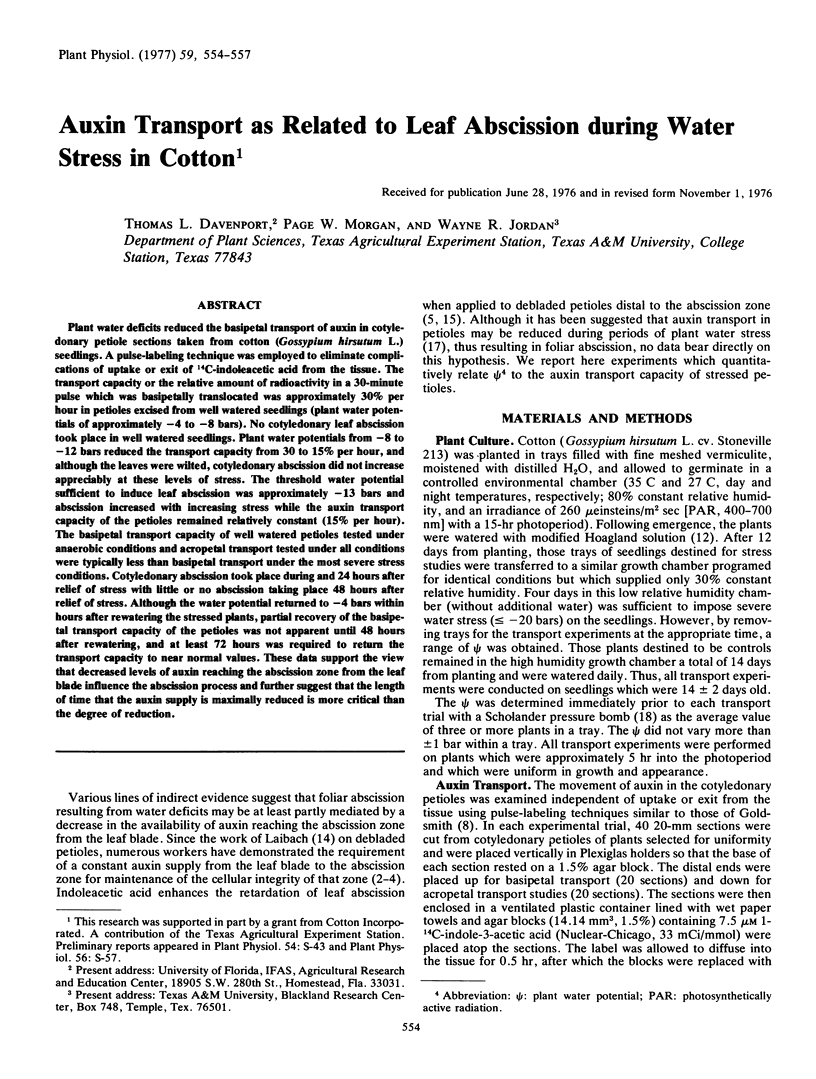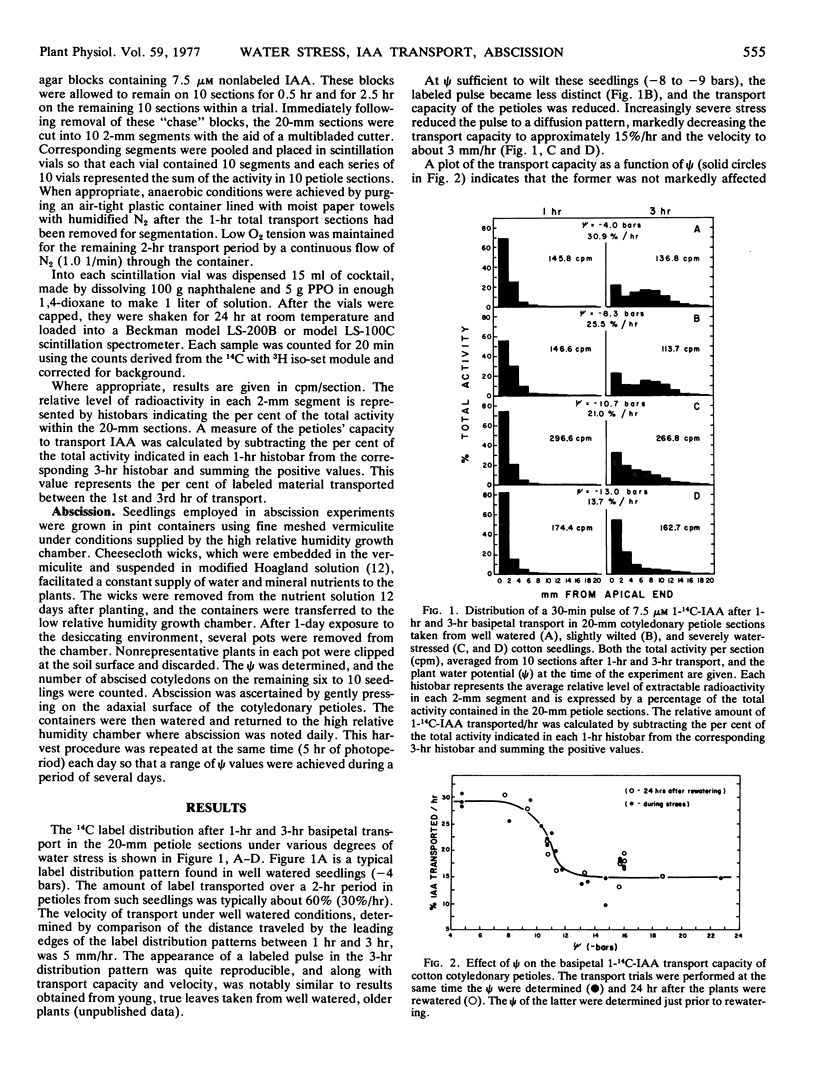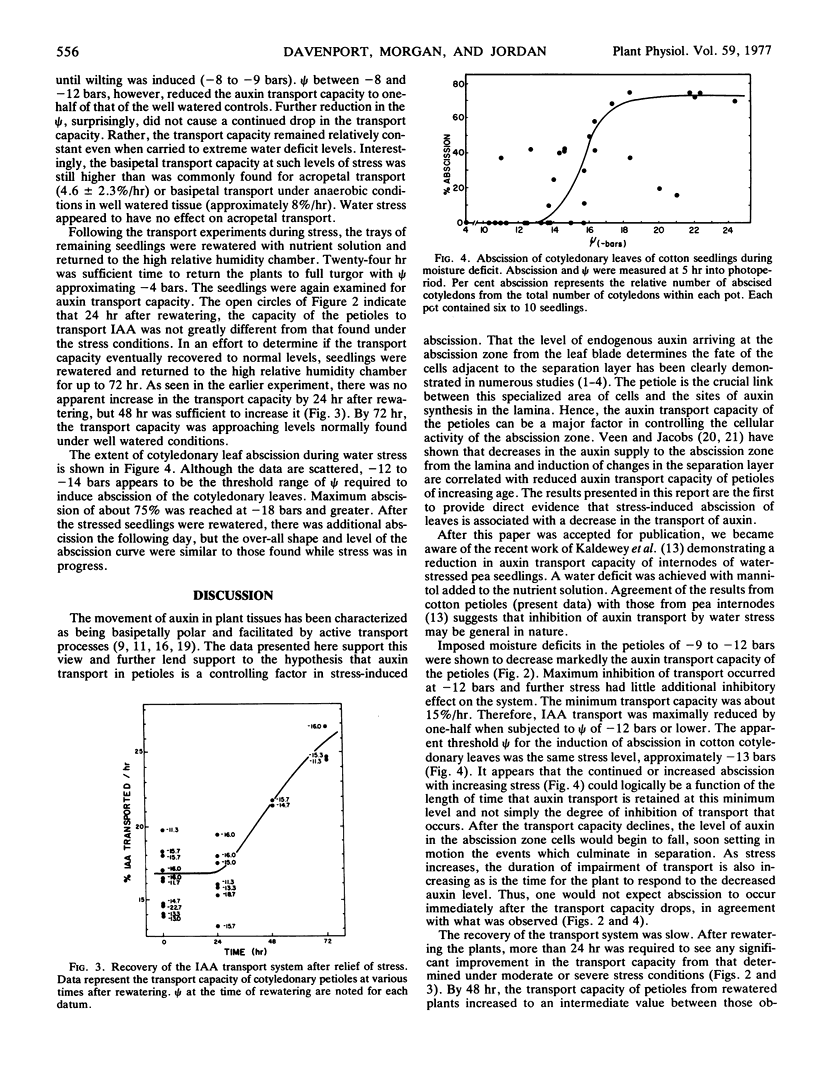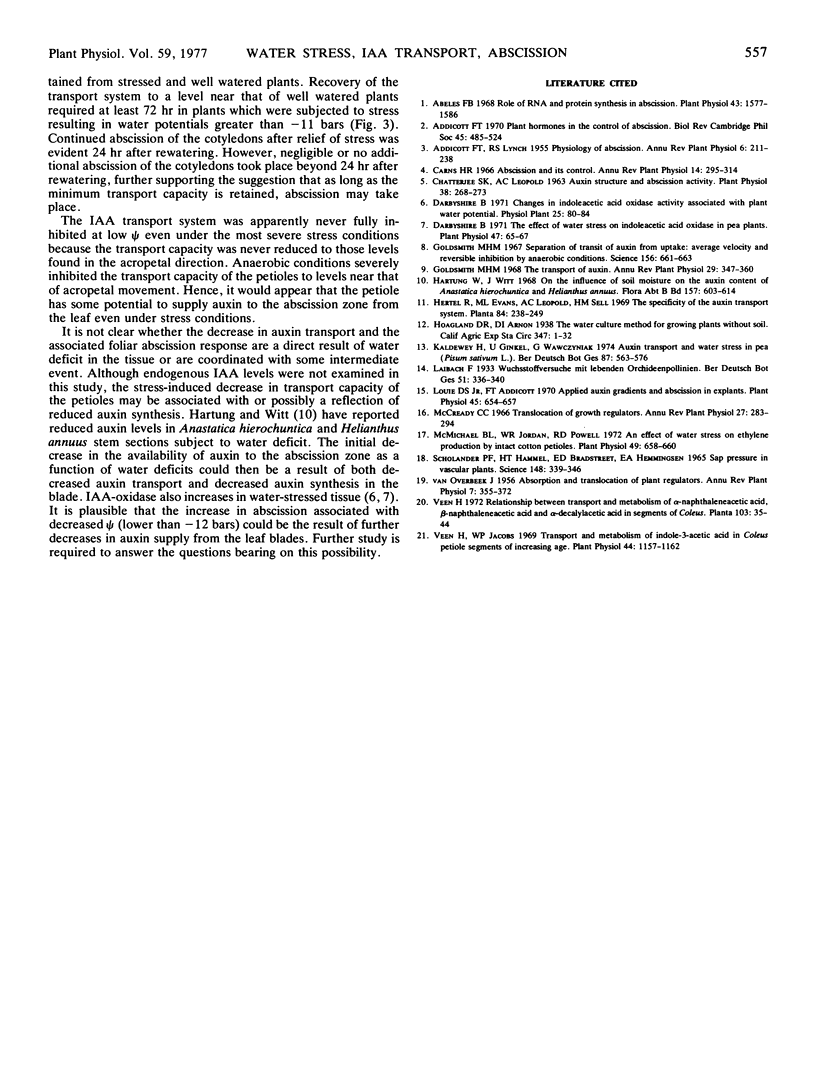Abstract
Plant water deficits reduced the basipetal transport of auxin in cotyledonary petiole sections taken from cotton (Gossypium hirsutum L.) seedings. A pulse-labeling technique was employed to eliminate complications of uptake or exit of 14C-indoleacetic acid from the tissue. The transport capacity or the relative amount of radioactivity in a 30-minute pulse which was basipetally translocated was approximately 30% per hour in petioles excised from well watered seedlings (plant water potentials of approximately -4 to -8 bars). No cotyledonary leaf abscission took place in well watered seedlings. Plant water potentials from -8 to -12 bars reduced the transport capacity from 30 to 15% per hour, and although the leaves were wilted, cotyledonary abscission did not increase appreciably at these levels of stress. The threshold water potential sufficient to induce leaf abscission was approximately -13 bars and abscission increased with increasing stress while the auxin transport capacity of the petioles remained relatively constant (15% per hour). The basipetal transport capacity of well watered petioles tested under anaerobic conditions and acropetal transport tested under all conditions were typically less than basipetal transport under the most severe stress conditions. Cotyledonary abscission took place during and 24 hours after relief of stress with little or no abscission taking place 48 hours after relief of stress. Although the water potential returned to -4 bars within hours after rewatering the stressed plants, partial recovery of the basipetal transport capacity of the petioles was not apparent until 48 hours after rewatering, and at least 72 hours was required to return the transport capacity to near normal values. These data support the view that decreased levels of auxin reaching the abscission zone from the leaf blade influence the abscission process and further suggest that the length of time that the auxin supply is maximally reduced is more critical than the degree of reduction.
Full text
PDF



Selected References
These references are in PubMed. This may not be the complete list of references from this article.
- Abeles F. B. Role of RNA and protein synthesis in abscission. Plant Physiol. 1968 Sep;43(9 Pt B):1577–1586. [PMC free article] [PubMed] [Google Scholar]
- Chatterjee S., Leopold A. C. Auxin Structure & Abscission Activity. Plant Physiol. 1963 May;38(3):268–273. doi: 10.1104/pp.38.3.268. [DOI] [PMC free article] [PubMed] [Google Scholar]
- Darbyshire B. The effect of water stress on indoleacetic Acid oxidase in pea plants. Plant Physiol. 1971 Jan;47(1):65–67. doi: 10.1104/pp.47.1.65. [DOI] [PMC free article] [PubMed] [Google Scholar]
- Goldsmith M. H. Separation of transit of auxin from uptake: average velocity and reversible inhibition by anaerobic conditions. Science. 1967 May 5;156(3775):661–663. doi: 10.1126/science.156.3775.661. [DOI] [PubMed] [Google Scholar]
- Louie D. S., Addicott F. T. Applied auxin gradients and abscission in explants. Plant Physiol. 1970 Jun;45(6):654–657. doi: 10.1104/pp.45.6.654. [DOI] [PMC free article] [PubMed] [Google Scholar]
- McMichael B. L., Jordan W. R., Powell R. D. An effect of water stress on ethylene production by intact cotton petioles. Plant Physiol. 1972 Apr;49(4):658–660. doi: 10.1104/pp.49.4.658. [DOI] [PMC free article] [PubMed] [Google Scholar]
- Scholander P. F., Bradstreet E. D., Hemmingsen E. A., Hammel H. T. Sap Pressure in Vascular Plants: Negative hydrostatic pressure can be measured in plants. Science. 1965 Apr 16;148(3668):339–346. doi: 10.1126/science.148.3668.339. [DOI] [PubMed] [Google Scholar]
- Veen H., Jacobs W. P. Transport and metabolism of indole-3-acetic Acid in coleus petiole segments of increasing age. Plant Physiol. 1969 Aug;44(8):1157–1162. doi: 10.1104/pp.44.8.1157. [DOI] [PMC free article] [PubMed] [Google Scholar]


